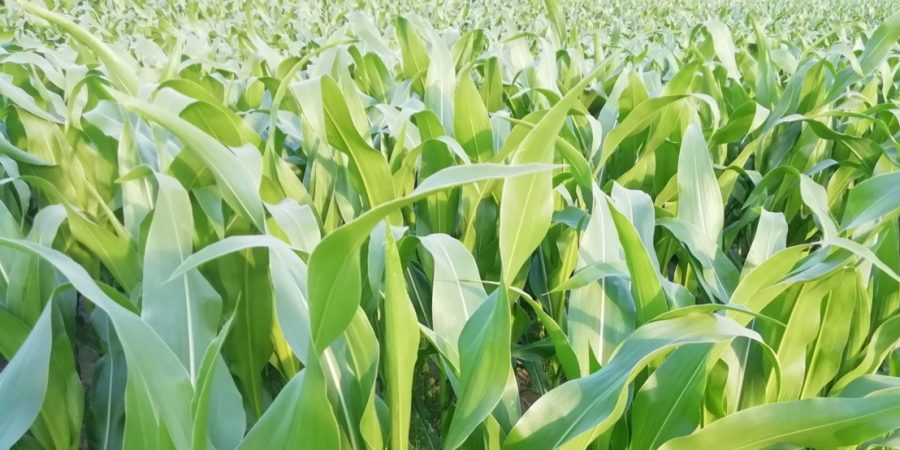Press release ILVO fodder beet and maize variety list 2024

Choosing the most appropriate variety of maize or fodder beet? The new independent VARIETY LIST is a good start.
Maize and fodder beet varieties still can differ greatly. As a farmer, it is wise to tailor your variety choice to your own farm situation. What is a good variety for your neighbor is not necessarily a good choice for you. Inform yourself well, study the different characteristics of the varieties and determine which ones are important for your situation. A golden tip: base your choice only on multi-year figures, coming from independent (non-commercial) sources. The annually-updated ILVO variety list is an excellent source of information.
Silage maize
Silage maize is the main source of energy in the ration on many dairy farms. Cultivation efficiency begins with good variety selection. In doing so, pay attention to the following characteristics:
- Early maturity
Choose a maize variety with the right earliness. Your region and soil type are important here. Every field is a unique combination of soil type, soil temperature, nutrient supply or water balance. All these aspects influence your choice of varieties. Make sure you can harvest ripe maize on each plot at the right time. Do you still need to sow a green cover crop in the fall? Or can you sow late? Then early maturing corn varieties are always the best option. - Yield
Of course, high yields are important. Thanks to the efforts of breeding companies, new varieties are performing better and better. Over the last 15 years, the silage maize varieties on the ILVO variety list realized an average yield increase of 1% per year. That means that with recent varieties you get on average 15% more yield than 15 years ago. You notice that difference in the silage. So it pays to keep looking for new and better varieties for your farm. - Starch content
The most valuable component of corn silage is the starch, which is found in the cob. In rations with only very high levels of maize silage excess starch can potentially cause rumen acidosis. - Digestibility
The total digestibility of the maize plant is determined by the starch content and the digestibility of stalks and leaves. In the ILVO variety list, the total digestibility of the organic matter (= the entire maize plant) is expressed as % digestible components relative to the total biomass. In varieties with similar starch content and different total digestibility, it is mostly the better digestibility of stalks and leaves that contribute to high total digestibility.
In December 2023, 4 new silage corn varieties were added to the ILVO variety list:
Variety |
Grower |
Sales representative |
LG31206 |
Limagrain Europe (F) |
Aveve Zaden - Landen |
Qualito |
KWS Einbeck (D) |
KWS Benelux BV - Tournai |
LID1810C |
Euralis Semences – Blois (F) |
Lidea France SAS |
LG31271 |
Limagrain Europe (F) |
Limagrain Belgium NV - Kluisbergen |
Grain maize
Due to the high rainfall in November and December of 2023, many wheat plots were not sown or under poor conditions. Grain maize represents an interesting alternative for the unseeded plots. Also with grain maize, a good choice of varieties is decisive for the financial return of the crop.
- Early maturity
Grain corn is grown for its dry grain. If at threshing time the moisture content in the grain is not low enough, it will be further dried. This involves drying costs. So always make a good trade-off between possible increased yields and the risk of associated higher drying costs of late maturing varieties. Corn cob mix or CCM is threshed at a slightly higher moisture content (35-40% moisture or 60-65% dry matter). - Yield
As with silage corn, breeders are also succeeding in increasing yield potential with grain corn. Based on 20-year figures from the ILVO variety list, it appears that the yield increase in grain maize averages 1.25% annually. So it is definitely worth choosing a recent variety from the ILVO variety list. - Stem rot and wilting resistance
Because grain corn stays in the field longer, it is important to choose a variety with good standability. A good tolerance to stem rot, caused by Fusarium fungi, and a good tolerance to alloy are indispensable characteristics for a good grain corn variety. By the way, did you know that only varieties that score sufficiently on this trait are admitted to the ILVO variety list? Varieties that show a deficiency for this during the multi-year trial cycle are rejected and you will not find them in the ILVO variety list.
In December 2023, 9 new grain corn varieties were added to the ILVO variety list:
Variety |
Grower |
Sales representative |
Amatino |
KWS - Einbeck (D) |
KWS Benelux BV - Tournai |
Celebrato |
KWS - Einbeck (D) |
Aveve Zaden -Landen |
Drako |
KWS - Einbeck (D) |
KWS Benelux BV - Tournai |
ES Blackjack |
Euralis Semences - Blois (F) |
Lidea France SAS |
KWS Adorado |
KWS - Einbeck (D) |
KWS Benelux BV - Tournai |
KWS Allinno |
KWS - Einbeck (D) |
KWS Benelux BV - Tournai |
KWS Nevo |
KWS - Einbeck (D) |
KWS Benelux BV - Tournai |
LG31230 |
Limagrain Europe (F) |
Limagrain Belgium NV - Kluisbergen |
Fodder beet
One of the biggest challenges in our region when growing fodder beets is the soil-borne fungus Rhizoctonia solani. Early in the growing season, this fungus can strike and cause wilting of young seedlings. By using effective seed coatings, the young seedlings can be protected. The disease then becomes visible later during the growing season: first under the form of "dormant" beets (where the leaves hang limply). This is a sign that below ground the root has been affected. Eventually, there is a risk that the beet plant will die completely. On heavily infested plots, yield losses of up to 50% or more are possible. Infested beets (on which black spots are visible) will also continue to rot during storage.
Since there are no pesticides available for this disease, prevention is the main remedy. Rhizoctonia will benefit from poorer soil structure or water management. Taking care of your soil is important. The structural damage and soil compaction recently caused on many late-harvested plots is a major risk for Rhizoctonia expansion. Good crop rotation is also important. Because Rhizoctonia can also survive and propagate on several commonly grown crops (e.g., corn, grass, sugar beets), good crop rotation is not evident in practice. The most important measure for fodder beet growers to control Rhizoctonia infestation is by choosing Rhizoctonia tolerant varieties.
In January 2024, the ILVO variety list included a new fodder beet variety with medium to high tolerance to Rhizoctonia.
Variety |
Grower |
Sales representative |
Foribo |
Florimond Desprez Veuve et Fils (FR) |
Limagrain Belgium NV - Kluisbergen |
The ILVO variety lists are available by crop in three languages (NL, FR, EN) and can be consulted at https://rassenlijst.ilvo.vlaanderen.be/en/
ILVO rassenlijst 2024
The new ILVO 2024 variety list is known and can be found at https://rassenlijst.ilvo.vlaanderen.be/en/


